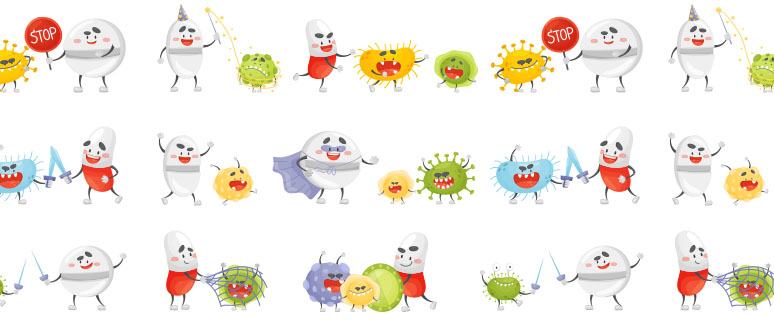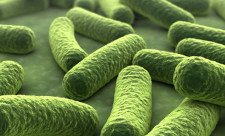
At the beginning of the year, new non-fiction books on the subject of bacteria were published, some of them marketed to children. Regrettably, titles such as “Monster Microbes” trigger negative impressions and fail to do justice to the great importance and the marvellously healthy way in which bacteria do their job. Rather more fitting is the book’s subtitle – “Everything about useful bacteria and vile viruses”. As it happens, we are aware of many useful bacteria, and the scientific community is constantly looking into these and new effects and functions are discovered.
Also at the beginning of the year, two US microbiologists received the Paul Ehrlich and Ludwig Darmstaedter Prize. They discovered how bacteria communicate with each other – and that, by interfering with this communication, we can prevent pathogenic bacteria from becoming effective. This phenomenon is also referred to as “quorum quenching”, and could be used to avoid treatment with antibiotics which often have numerous harmful side effects. Substantiating its decision to award the prize, the jury hence wrote: “Instead of killing bacteria with antibiotics, substances may be developed that interfere with bacterial communication. The prize-winners’ research thus has considerable relevance for medicine”.
The background is that bacteria examine their surroundings to find additional members of their species, and then communicate with them. Once they’ve discovered a sufficient number of other bacteria – a process called “quorum sensing” – they are able to act collectively. The Ärztezeitung writes: “Even though bacteria are single-cell organisms, they have to collaborate to achieve shared goals. Creating a biofilm to protect themselves from the immune system or synthesising toxins to attack the host can only be achieved successfully if the bacteria communicate with each other.”
Since “this isn’t an isolated phenomenon, but universal in the bacterial world”, as the text goes on to say, it could also be studied in healthy and useful bacteria. If we succeeded deciphering and improving their communication, rather than interfering with it, it might become possible to use newly-formed bacterial teams specifically for healing processes and prevention. Fear of “Monster Microbes” would thus be replaced by the hope for a team of bacterial physicians deployed naturally in the body.
Sources:
https://www.tagesschau.de/inland/paul-ehrlich-preis-113.html
https://www.sueddeutsche.de/kultur/biologie-schreckgespenst-corona-1.5187483
https://www.aerztezeitung.de/Medizin/Mikrobiologen-mit-Paul-Ehrlich-und-Ludwig-Darmstaedter-Preis-geehrt-416606.html
https://doi.org/10.11576/biuz-4250
Dieser Post ist auch verfügbar auf: German

 10. Jun 2021
10. Jun 2021 Popular
Popular Recent
Recent Comments
Comments












